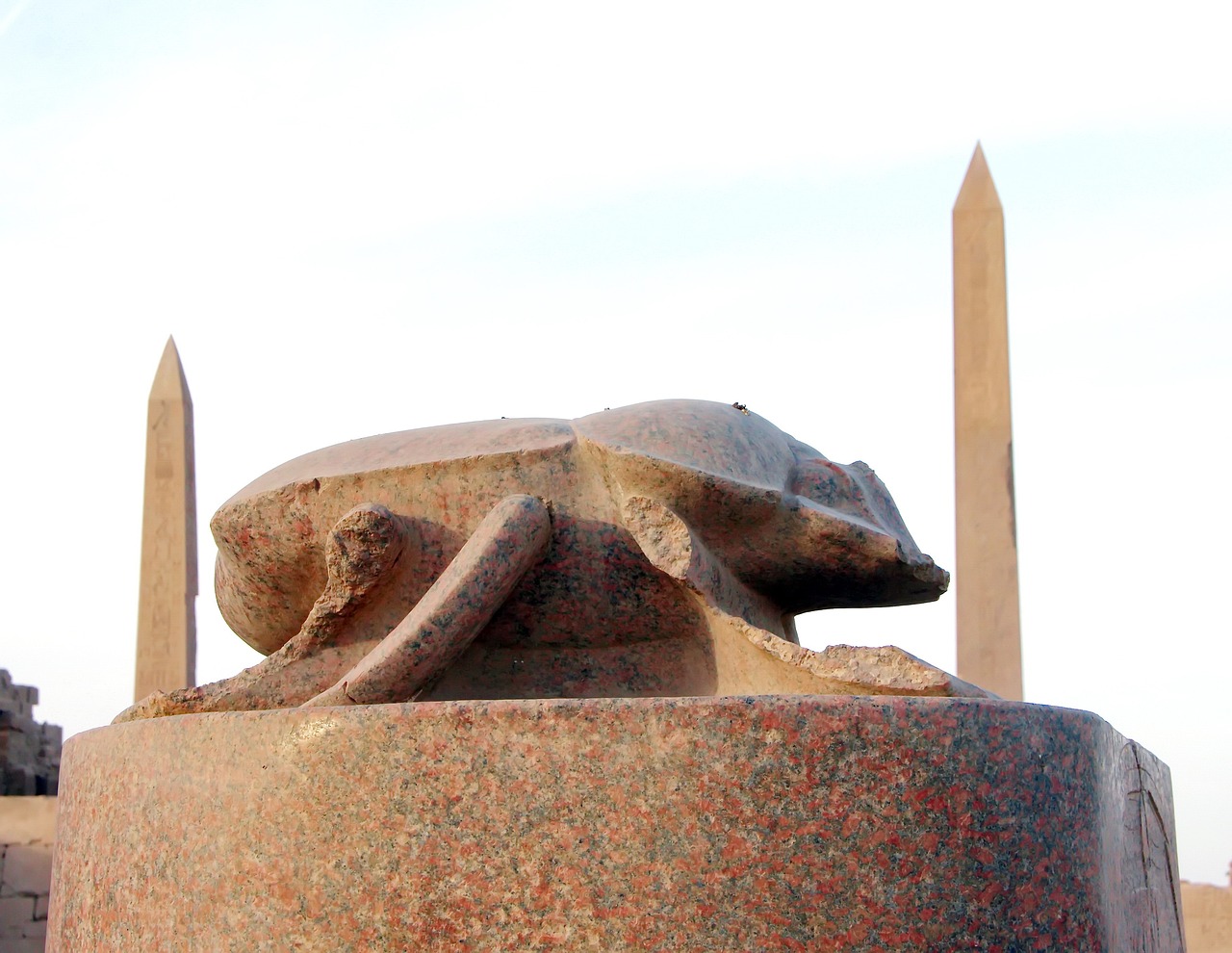Khepri, also known by names such as Kheper, Khepera, Chepri, and Khephir, is primarily linked to the scarab or dung beetle (Scarabaeus sacer), firmly establishing him as a prominent insect deity in ancient Egyptian mythology. The Egyptians observed the scarab beetles as they rolled dung into spherical shapes and transported it to their burrows. This behavior drew parallels between the sun’s journey across the sky and the beetle’s movement of dung, accentuated by the scarab’s antennae. When they pushed the dung ball, it rested between these antennae, mimicking the solar disk flanked by horns worn by various gods.
One narrative posits that Khepri was responsible for moving the sun through the sky, diverging from other tales where the sun god traveled on the back of the goddess Nut or Hathor, or even on a boat. Khepri was depicted actively pushing the sun forward, a dynamic that symbolized a continuous cycle. Each night, he would guide the sun into the underworld, only for it to arise again each morning. The term “kheper” itself means “to come into being” or “to emerge.”
Female scarabs lay their eggs in dung-laden burrows, and the young feed on the dung until they are ready to surface. The Egyptians believed that the emergence of these young scarabs from their burrows happened spontaneously, as if born from nothing. Consequently, Khepri, like Atum, was revered as a self-creating deity. Scarabs that also laid eggs in carrion further contributed to the idea that these creatures were born from decay, linking Khepri to themes of rebirth, renewal, and resurrection.
His significance is underscored in the “Book of the Dead,” often referred to as “the book of coming forth by day,” and in the “Amduat,” which details the underworld. Scarab amulets were placed on the hearts of the deceased during mummification rites. These “heart scarabs” served the purpose of weighing against the feather of Ma’at, symbolizing truth, during the ultimate judgment. Many of these scarabs bore inscriptions from the Book of the Dead, urging the heart not to testify against the deceased.
Over time, Khepri came to symbolize a facet of the sun itself, particularly during dawn, marking the moment it “emerged” from the underworld. He was associated with other sun deities like Atum (the creator god), Nefertum (often viewed as “young Atum” or the beautiful aspect of Atum), and Ra, from whom he absorbed numerous traits. Khepri represented the dawn sun, while Nefertum represented the sun just born, Ra embodied the midday sun, and Atum reflected the evening sun. In later funerary literature, Atum and Khepri were depicted as a ram-headed beetle, embodying the supreme power of life over death.
Khepri first appears in the Pyramid Texts, although evidence suggests his worship may date back even further, with crude scarabs found from the Neolithic era (approximately 7000-5000 BC). His worship reached a peak during the New Kingdom. While no specific temples or cults for Khepri have been uncovered, it is believed that most, if not all, Egyptian temples housed statues of him. Scarab amulets gained considerable popularity across societal ranks and were inscribed for a myriad of uses beyond mummification, indicating Khepri’s favor among the public and royalty alike, as many pharaohs incorporated his name into theirs.
Typically portrayed as a scarab beetle, Khepri occasionally appears in human form with a scarab head. Numerous images depict him pushing the sun and taking part in funerary scenes as he traverses the underworld in a solar barque. His associations with rebirth and the realm of the dead often lead him to wear the atef crown associated with Osiris.



